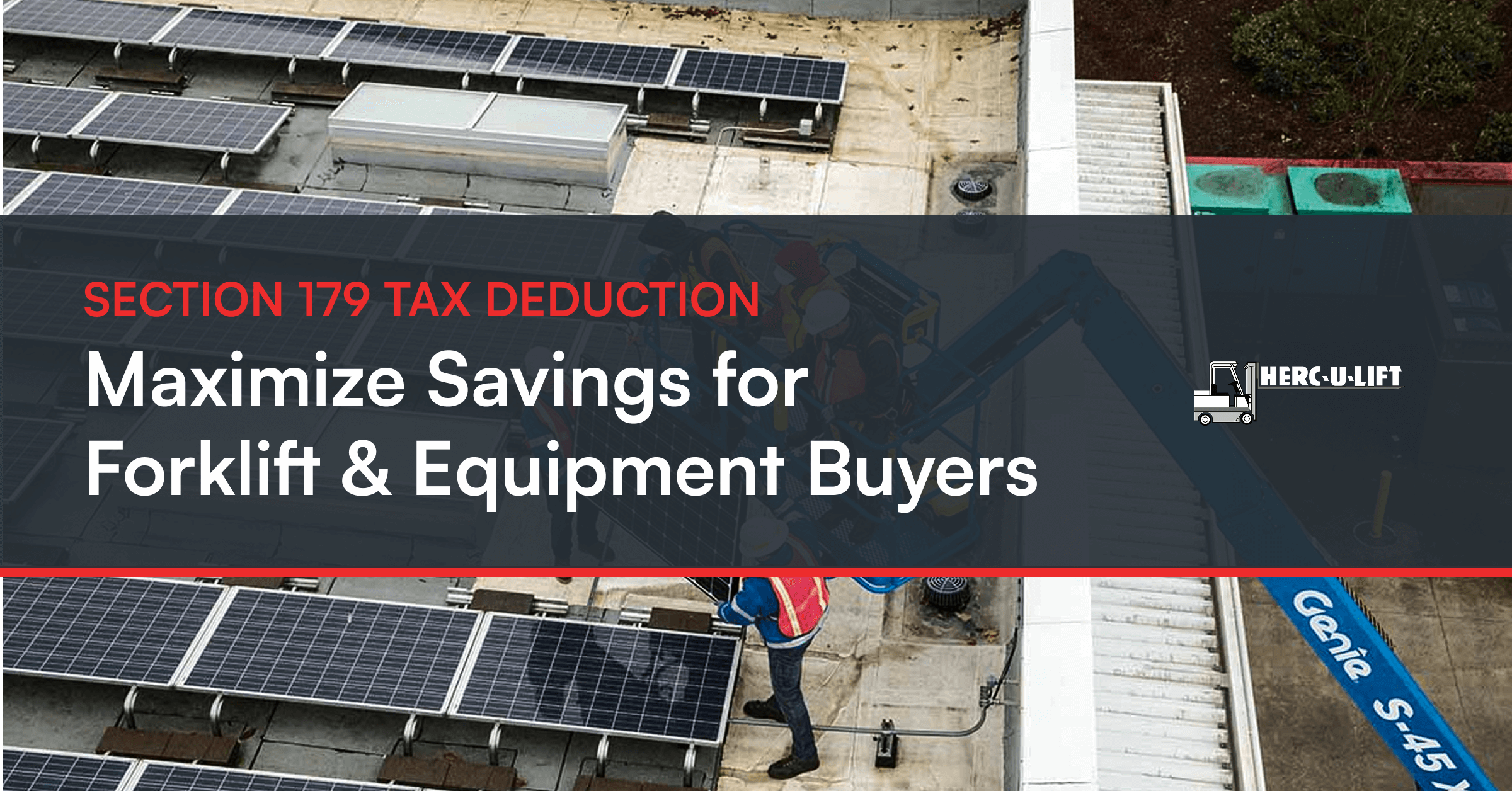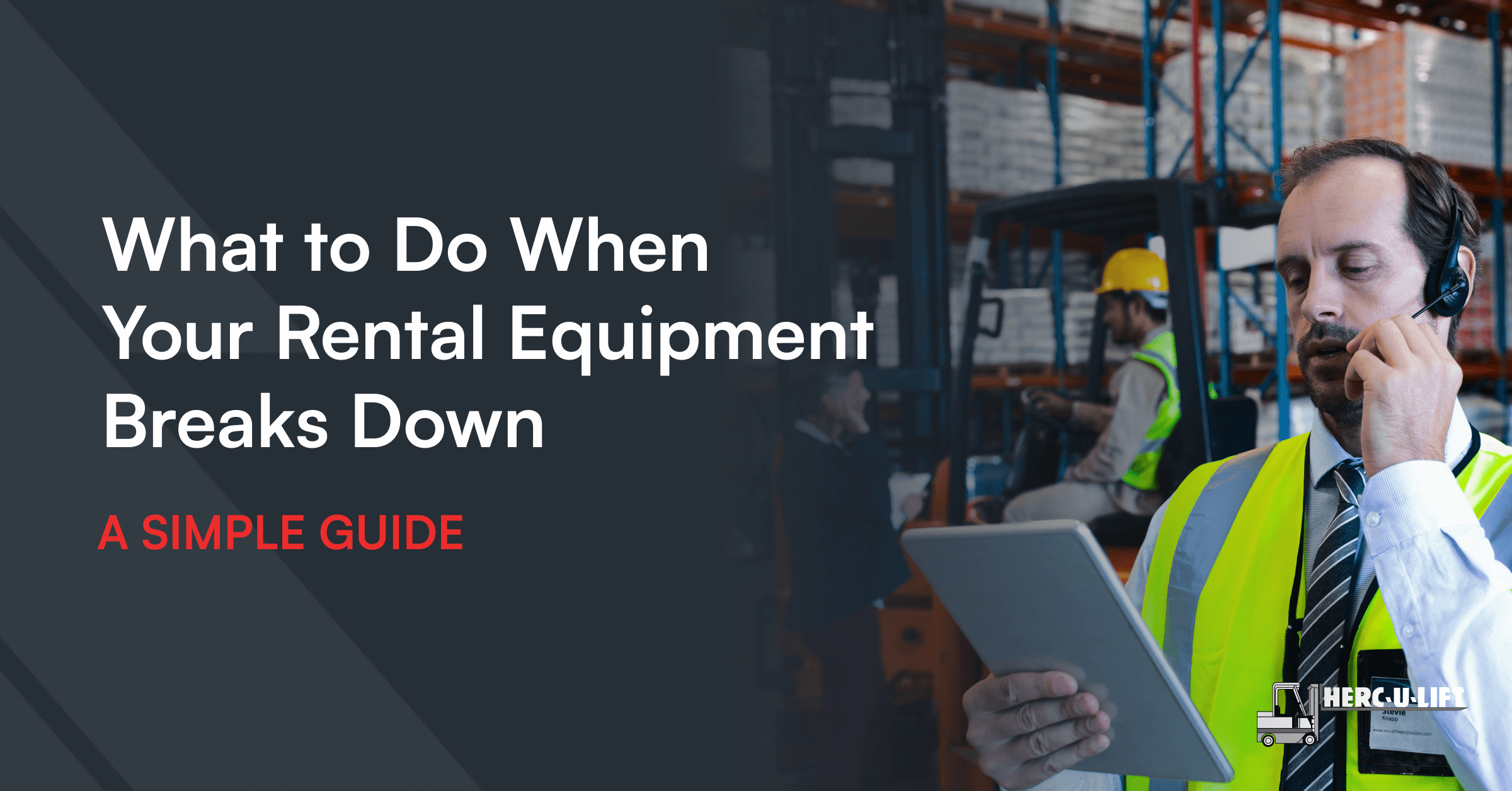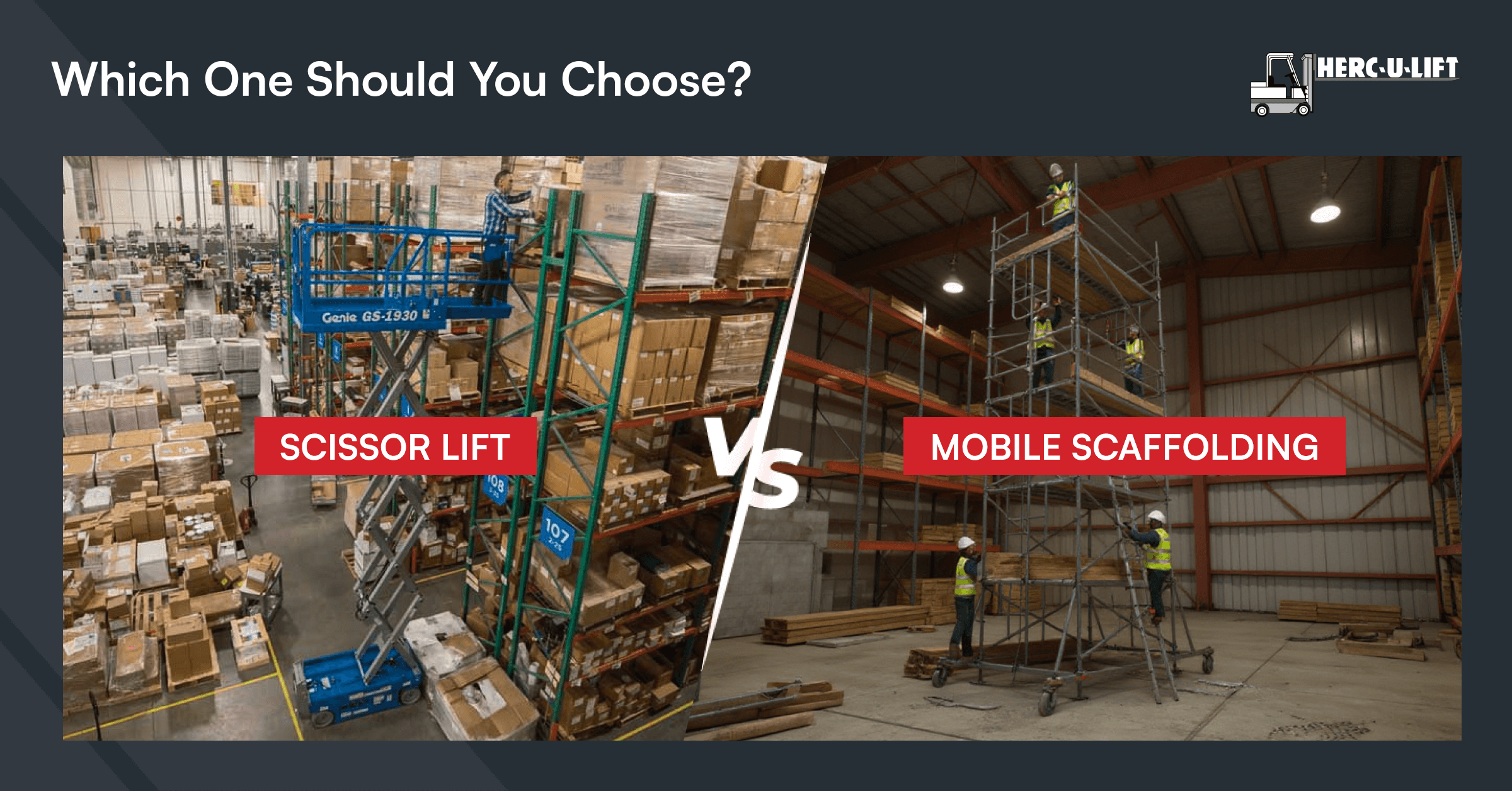Section 179 Tax Deduction Benefits for Forklift and Equipment Buyers

Note: This article is for informational purposes only. Please consult a qualified tax professional for advice specific to your business.
Buying a forklift or other heavy equipment soon? You need to know about Section 179!
Section 179 is a powerful tax incentive for equipment buyers. With it, business owners can get full purchase price deductions of qualifying industrial equipment (like forklifts). As such, it could lead to significant tax savings, cash flow improvement, and business growth.
Whether you are replacing an old forklift or expanding a fleet, learning about this IRS tax code is a must.
In this article, we explain what Section 179 is, how it works, and how to maximize its benefits for your equipment investments.
What is Section 179?
Section 179 is a provision in the U.S. Internal Revenue Code. It allows for the deduction of the full cost of qualifying equipment in the year it was bought and placed into service. This code was designed to encourage small and mid-sized business owners to invest in themselves by purchasing equipment.
Utilizing Section 179, businesses may realize significant tax savings in the year that the equipment is acquired rather than having tax deductions for depreciation of the equipment spread over 5 or 7 years.
How Section 179 Applies to Forklift and Equipment Buyers
Both new and used units qualify for Section 179. This applies as long as you’re purchasing and using them for business purposes. Financing doesn’t disqualify your purchase either. You can claim the deduction regardless if you pay cash, use bank financing, or arrange dealer financing.
Also, the business-use percentage is a crucial factor. Equipment used 100% for business qualifies for the full deduction. If used partially for personal purposes, only the business portion qualifies.
Detailed Breakdown of Section 179 Limits and Thresholds
| 2025 Section 179 Deduction | |
|---|---|
| Maximum deduction limit | $1,250,000.00 |
| Phase-out threshold | $3,130,00.00 |
| Bonus depreciation | 40% |
The 2025 Section 179 limit is $1,250,000. Spend more than $3,130,000 and your deduction starts phasing out dollar for dollar.
These limits provide ample opportunity for forklift buyers. Case in point, a substantial fleet expansion of 10 forklifts at $50,000 each ($500,000 total) still falls within the deduction limit. The spending cap typically only affects big businesses making massive equipment investments across multiple categories.
Bonus depreciation can even supplement Section 179. It currently allows 40% deduction of remaining costs after Section 179 is applied. When combined, these provisions can provide considerable tax benefits for larger equipment purchases.
Pro Tip: A Section 179 deduction cannot exceed your business’ annual taxable income. If your business earns $100,000 yearly, the deduction is also capped at $100,000.
Step-by-Step Guide: How to Claim Section 179 Deduction for Forklift Purchases
Real-World Benefits of Using Section 179 for Forklift Buyers
The immediate cash flow benefit brings major opportunities for a growing business. If a warehouse buys 2 forklifts for $120,000, traditional depreciation spreads the write-off over 5 years at about $24,000 per year. At 25%, that’s around $6,000 in annual tax savings. Definitely a slow trickle that limits quick reinvestment.
Section 179 deducts $120,000 within the year, leading to $30,000 in tax savings. A business owner immediately has extra cash to reinvest. They can then use the money to upgrade equipment, improve facilities, and expand inventory.
Having reliable equipment also improves customer service, reduces workplace risks, and attracts new employees. Furthermore, proper timing can benefit businesses with fluctuating income.
To sum it all up, Section 179 isn’t just a tax perk. It’s a strategic financing tool for your business.
Important Considerations and Limitations
While Section 179 is beneficial, there are rules to keep in mind:
Section 179 vs Other Tax Incentives for Equipment Buyers
Section 179 vs. Bonus Depreciation
Section 179 allows businesses to choose how much to deduct. Bonus depreciation is automatic and only applies after the Section 179 limit is reached. Many businesses optimize their strategy by combining both incentives. They use Section 179 for initial purchases up to the limit, then apply bonus depreciation to additional equipment.
State-Level Incentives
Some states follow federal rules. Others have their own versions and offer different benefits.
Other Deductions
Other federal incentives might include R&D tax credits (research equipment) or energy credits (electric forklifts and other high-efficiency machines).
How Forklift Rental Companies Benefit from Section 179
If you own or operate a forklift rental company, you can use Section 179 to expand your fleet. Equipment held for rental use qualifies as long as it is actively used. Also, buying vs. leasing can offer better tax advantages because of depreciation and deductions.
Pro Tip: Consult your accountant to ensure proper classification and timing of purchases.
Tips to Maximize Your Section 179 Benefits
Many businesses choose to buy near the end of their fiscal year. This approach makes it easier for them to assess annual income and plan purchases that maximize the deduction. However, don’t let tax considerations override sound business decisions.
It’s still better to purchase equipment when your business needs it. If you need a forklift in March, waiting until December could affect productivity.
Work with a qualified tax professional. They can integrate Section 179 into your broader tax plan. Likewise, they can help you avoid costly mistakes.
In any case, maintain detailed records. Keep invoices, contracts, financing papers, delivery receipts, and usage logs. Having both digital and physical copies stored securely is the safest approach. If the IRS ever comes knocking, having proper documentation will serve you well.
FAQs About Section 179 and Forklift Purchases

Disclaimer: This blog post is provided for informational purposes only and should not be construed as tax, legal, or accounting advice. Every business situation is unique, and tax laws are subject to change. You should consult with your tax advisor, CPA, or financial professional to determine how Section 179 or any other tax deductions apply to your specific circumstances.

 →
→

